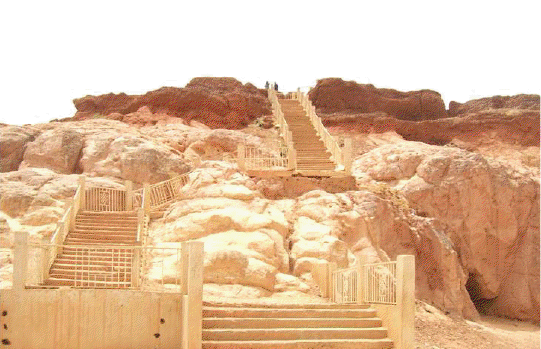The magnificent Dala hill, which is also referred to as “Dutsen Dala” in Hausa, is crucial to understanding the history of the Dala people and Kano. In the Dala Local Government Area of Kano city, Kano State, the mysterious Dala hill has a majestic height of 534 meters and covers a land mass of 289,892 meters. Tourists are compelled to ascend the hill because of its stunning view. There are potsherds, the remains of dyeing pits, and graves at the hill’s base, all of which point to the presence of some early settlers. Due to the abundance of iron ore found on the hill, these early settlers, who were craftsmen, turned their attention to mining and various types of iron works.

Dala Hill is said to have been named after a hunter by the name of Dala, who hunted wild animals in a jungle all around the hill. The hunter Dala eventually made the decision to settle on the hill and established the Dala community, which now has a large population.
Dala Hill is believed to have been the first Kano settlement and the origin of the name “Kano.” Even at the end of the 15th century, Dala was the name Kano used to be given to it. The Dala hill (also known as Dalla hill) used to be extremely difficult to ascend, but as technology advances, a stairway has been constructed to the hill’s summit, with a total of nine hundred ninety nine (999) steps. It is believed that at the peak of the hill is a deep and enigmatic well known as “Rijiyar kare kukan ka,” which means “the well where you will cry out your tears without help.” According to popular belief, this well is so deep that even if a stone were to be thrown into it, it would take about 25 minutes for the stone to reach the water. The people are afraid of falling and drowning, so they never fetch from the well.

There was once a priest and goddess known as Barbushe and Tsumburbura, according to another legend. The latter was said to have shielded the hillside populace from their adversaries, and Barbushe acted as a middleman between the populace and the goddess. In contrast to visitors, who can only climb the hill after 8 p.m., Dala’s natives believe that only they can do so. The locals say that visitors can’t climb the hill after 8 p.m. without being punished. According to recent archaeological findings, there might have once been a hilltop shrine that belonged to the mythical priest and goddess. This claim was also supported by an enormous pot that was found at the top of the hill, and it is believed that many more pots are still beneath the ground.
The Dala people and Kano as a whole are extremely proud of the Dala hill. It is essential to acknowledge its historical, social, and financial significance. A popular tourist destination in Kano is the hill, groundnut pyramids, and dyeing pits. The Kano History and Culture Bureau is in charge of its preservation and safeguarding.

